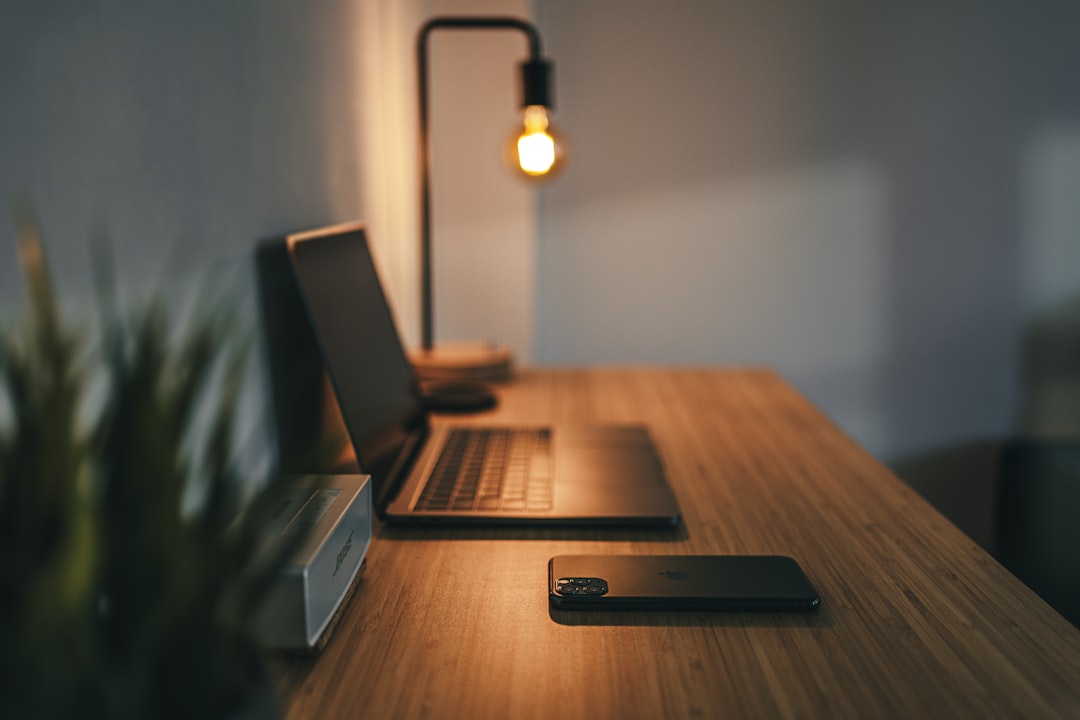In today’s fast-paced world, it’s easy to get caught up in the hustle and bustle of everyday life. With so many responsibilities and tasks to juggle, it can be challenging to find a healthy balance between work and personal life. However, finding this balance is crucial in maintaining overall well-being and happiness.
In recent years, many individuals have become increasingly aware of the importance of work-life balance. The pressure to succeed in both professional and personal life can lead to stress, burnout, and other negative effects. It’s important to prioritize self-care, set boundaries, and stay mindful to avoid becoming overwhelmed by our commitments.
In this blog post, we’ll explore seven different strategies to help achieve balance between work and personal life. From time-management techniques to self-care practices, we’ll cover everything you need to know to find the right balance. So, let’s get started!
Time Management Techniques: Strategies for managing your time effectively
In today’s fast-paced world, time is one of the most valuable resources that we have. With so many important tasks to accomplish each day, it’s crucial to have efficient time management strategies in place to ensure that we are able to achieve our goals effectively.
One of the key time management techniques is to first identify your priorities. It’s easy to get caught up in a long to-do list, but by prioritizing your tasks, you can ensure that you are focusing on the most important items first. Consider using a planner or app to organize your schedule and help you stay on track.
Another helpful strategy is to break down larger tasks into smaller, more manageable ones. This can help make the task feel less overwhelming and help increase productivity. Additionally, try to estimate how long a task will take and block off time on your schedule to work on it.
Another effective time management technique is to delegate tasks whenever possible. Don’t be afraid to ask for help when needed, and consider outsourcing tasks that aren’t your specialty. This can free up more time for you to focus on the tasks that truly matter.
It’s also important to take breaks when needed. Pushing yourself to work non-stop can lead to burnout and decreased productivity. Take short breaks throughout the day to refresh your mind and give yourself time to recharge.
Finally, try to minimize distractions as much as possible. It’s easy to lose track of time when we get sidetracked by social media or other interruptions. Consider turning off notifications or working in a quiet space to help stay focused.
By using these time management techniques, you can better manage your time and increase your productivity. This will ultimately help you achieve a better balance between work and personal life.
Consider turning off notifications or working in a quiet space to help stay focused.
Prioritization: How to prioritize tasks to ensure you are focusing on the most important things
In today’s fast-paced world, we are constantly being bombarded with tasks that need to be completed. It seems like the list never ends, and there is always something else that needs our attention. This can be overwhelming and lead to a feeling of being stuck, not knowing where to start or what to prioritize.
However, prioritization is the key to managing our workload effectively and maximizing our productivity. By focusing on the most important tasks, we can ensure that we are making the best use of our time and getting things done efficiently.
Here are some tips on how to prioritize tasks effectively:
1. Determine the importance of the task: Before you start working on a task, ask yourself how important it is. Does it need to be done today, or can it wait until tomorrow? Is it a critical task or something that can be pushed back? By determining the importance of the task, you can determine where it fits on your priority list.
2. Create a to-do list: Write down all the tasks that you need to complete and organize them based on their importance. This will help you stay organized and ensure that you don’t forget anything important.
3. Identify urgent vs. important tasks: Some tasks may be urgent, but not necessarily important. For example, answering emails may be urgent, but it’s not necessarily the most important thing you need to do. On the other hand, completing a project that will lead to revenue growth may not be urgent, but it is critically important.
4. Focus on completing one task at a time: Don’t try to multitask or juggle too many tasks at once. It’s easy to get overwhelmed and end up not being productive at all. Instead, focus on completing one task at a time and giving it your full attention.
5. Review and adjust your priorities regularly: Priorities can change, and it’s important to review and adjust them regularly. This will ensure that you are always focusing on the most important tasks and making the best use of your time.
By prioritizing tasks effectively, you can ensure that you are focusing on the most important things and making the best use of your time. This will not only help you to be more productive but also reduce your stress levels and improve your work-life balance.
important tasks: Some tasks may be urgent, but not necessarily important.
Setting Boundaries: Tips for setting boundaries to ensure work doesn’t take over your personal life
In today’s fast-paced world, it’s increasingly challenging to maintain a healthy balance between work and personal life. One of the biggest challenges people face is how to set boundaries so that work doesn’t take over personal life. Setting boundaries is essential because it helps you prioritize your time, stay focused, and ultimately, be more productive.
Here are a few tips on how to set boundaries to ensure work doesn’t take over your personal life:
1. Define your working hours: One of the best ways to set boundaries is to define your working hours. Create a schedule and stick to it. If you work from home, it can be tempting to work all day long, but that’s not sustainable in the long run. Set a start and end time for work, and stick to it. This way, you can plan your personal life around your work schedule and ensure that you have time for everything.
2. Turn off notifications: Notifications can be distracting and add unnecessary pressure to your already busy life. Turn off notifications on your phone and computer when you’re not working. This way, you won’t be tempted to check your emails or messages outside of your working hours.
3. Say no to non-essential tasks: There will always be tasks that are not necessarily essential but can eat into your time. It’s important to learn to say no to those tasks politely. This will help you prioritize your time and ensure that you’re focusing on the most critical tasks.
4. Learn to delegate: Delegating tasks to others can help you free up your time so you can focus on the essential tasks. If you have people in your team who can handle some of the tasks, delegate those tasks to them. This will not only free up your time, but it will also help you grow your team’s skills.
5. Take breaks: Taking breaks is essential to avoid burnout. Make sure to take regular breaks during the day, and don’t forget to take a few days off now and then. Taking breaks helps you recharge and gives you the energy you need to be more productive.
In summary, setting boundaries is a critical aspect of achieving a balance between work and personal life. By defining your working hours, turning off notifications, saying no to non-essential tasks, delegating tasks, and taking breaks, you can ensure that work doesn’t take over your personal life. Take the time to implement these tips, and you’ll soon see the benefits of having a better work-life balance.
Create a schedule and stick to it.
Self-Care: The Importance of Taking Care of Yourself
In today’s fast-paced world, finding a balance between work and personal life is more important than ever. While it’s easy to get caught up in the demands of work and responsibilities, it’s important to prioritize self-care as part of your daily routine.
Self-care refers to taking care of your physical and mental well-being. It can be something as simple as taking a walk or practicing mindfulness, or it can be more involved, like attending a yoga class or getting a massage. Whatever form it takes, self-care is essential for maintaining balance and preventing burnout.
One of the best ways to incorporate self-care into your daily routine is to make it a priority. This means setting aside time each day to focus on yourself and your needs. This could mean waking up a little earlier to meditate or going to bed a little later to read a book. Whatever it is, make sure it’s something that you enjoy and that helps you recharge.
Another important aspect of self-care is taking care of your physical health. This includes getting enough sleep, eating a healthy diet, and exercising regularly. When you prioritize your physical health, you’ll feel better both physically and mentally, which can help you be more productive and focused at work.
Self-care also means setting boundaries and saying no when necessary. Sometimes it’s easy to say yes to everything and everyone, but this can lead to feeling overwhelmed and burnt out. By setting boundaries and learning to say no, you can prioritize your own needs and avoid taking on too much.
Incorporating self-care into your daily routine doesn’t have to be complicated or time-consuming. It’s about making small changes that help you prioritize your well-being and finding activities that bring you joy and relaxation. By taking care of yourself, you’ll be better equipped to manage the demands of work and personal life, and find the balance that’s right for you.
While it’s easy to get caught up in the demands of work and responsibilities, it’s important to prioritize self-care as part of your daily routine.
Mindfulness: Techniques for being present in the moment and avoiding distractions
In today’s fast-paced world, it can be challenging to avoid distractions and stay present in the moment. Mindfulness techniques can help you focus on the task at hand, reduce stress, and improve your overall well-being.
One technique to try is deep breathing. Take a few deep breaths in and out, focusing on the sensation of the air moving in and out of your body. Repeat this a few times until you feel calmer and more focused.
Another technique is to practice mindfulness meditation. Find a quiet and comfortable place to sit or lie down, and focus on your breath. When your mind wanders, gently bring it back to your breath. You can start with just a few minutes a day and gradually increase the time as your practice develops.
You can also practice mindfulness during daily activities like eating, walking or cleaning. Focus on the sensations and thoughts that come up during these activities, without judgment or distraction.
It can be helpful to take breaks throughout the day to practice mindfulness techniques. This can improve your focus and productivity, while reducing stress and improving your overall well-being.
In conclusion, mindfulness techniques can be a valuable tool to help find balance in our fast-paced world. By practicing mindfulness and being present in the moment, we can improve our focus, reduce stress, and find a better balance between work and personal life.
Mindfulness techniques can help you focus on the task at hand, reduce stress, and improve your overall well-being.
Conclusion: Recap of the tips to help achieve a balance between work and personal life
As our lives become increasingly busy and chaotic, finding a balance between work and personal life can seem like an impossible feat. However, with the right strategies and techniques, it is possible to achieve a healthy work-life balance that leaves you feeling fulfilled and productive in all aspects of your life.
The first step in achieving balance is time management. By identifying your priorities and using effective time management techniques, such as time blocking and batch processing, you can ensure that you are making the most of your time and staying on top of your work without sacrificing your personal life.
In addition to time management, prioritization is key to maintaining a healthy work-life balance. By prioritizing your tasks based on importance and urgency, you can ensure that you are focusing your energy on the things that matter most and avoiding burnout.
Another important aspect of achieving balance is setting boundaries. It can be easy to let work bleed into your personal life, but by setting clear boundaries and sticking to them, you can ensure that you have time for the important things in life, such as spending time with loved ones and pursuing hobbies and interests.
Self-care is also essential in achieving balance. Taking care of yourself physically, mentally, and emotionally is key to staying healthy, happy, and productive. Incorporating self-care practices into your daily routine, such as exercise, meditation, or a relaxing bath, can help you recharge and avoid burnout.
Finally, mindfulness is a powerful tool for achieving balance. By practicing mindfulness techniques, such as deep breathing or focused attention, you can stay present in the moment and avoid distractions, helping you to stay focused and efficient in both your personal and professional life.
In conclusion, achieving balance between work and personal life is a critical aspect of maintaining a fulfilling and productive life. By incorporating the strategies and techniques outlined in this article, you can find the balance that works best for you and enjoy a more satisfying and rewarding life.





